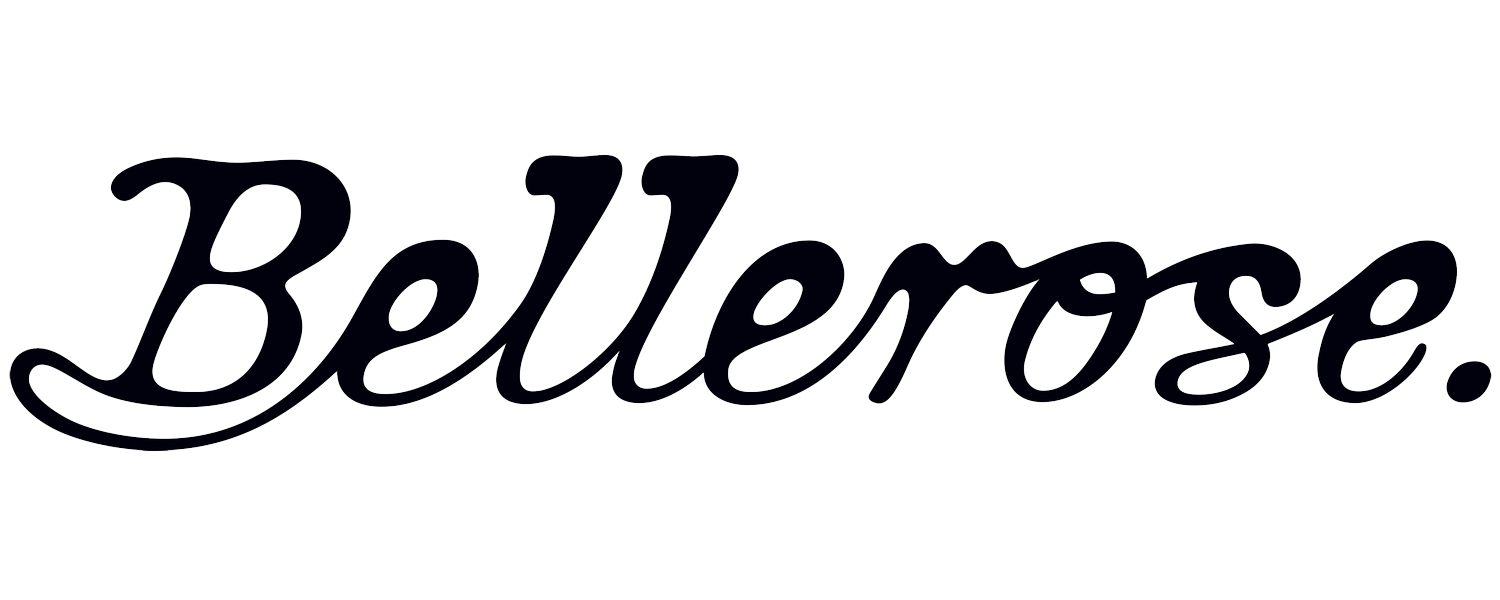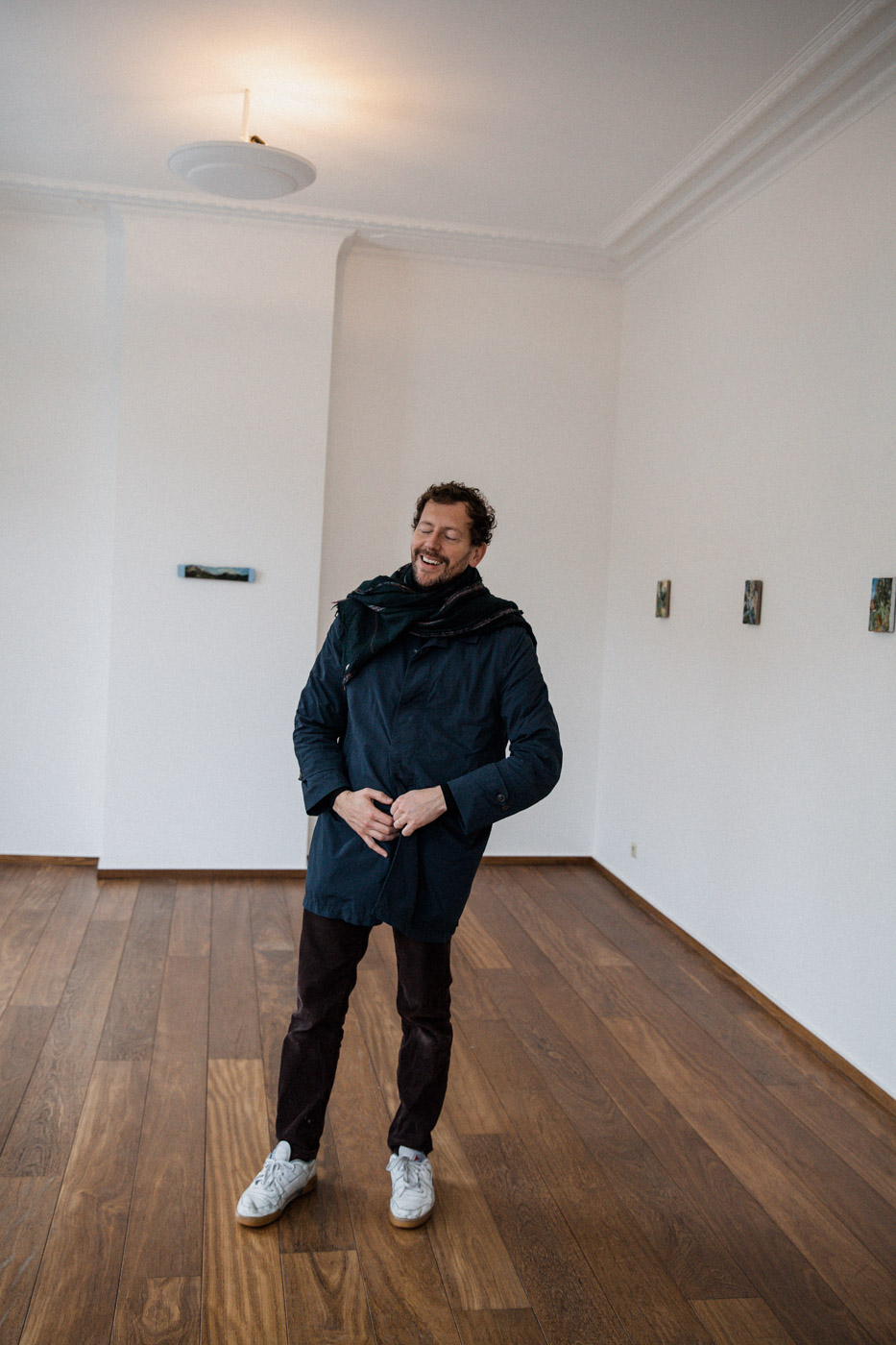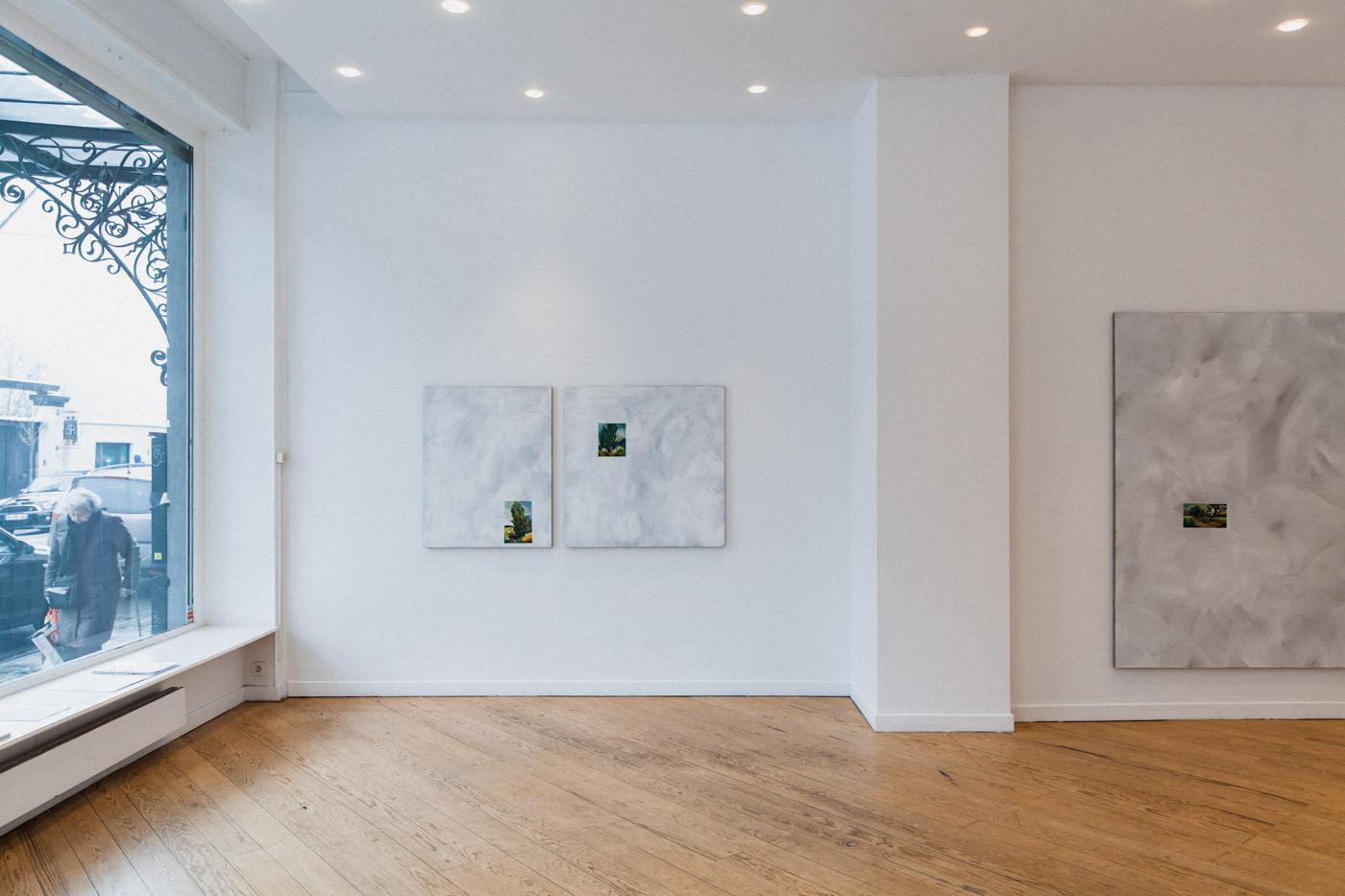Having worked with him on different projects, Sébastien Bonin is no stranger here at Bellerose. Whether it is photography, film or painting; whenever he does something, he does it passionately and differently. Believe us. In his paintings, he uses contrast and tension to create his own world, in between abstraction and figuration. We met up with him at the Michel Rein Gallery in Brussels, home of his newest exhibition called “Nycthéméral”.
First things first. The name of your exhibition is rather bizarre. What does it mean and how does it relate to your work?
“Nycthéméral” (“Nycthemeral” in English -ed.) is something I took from one of Michel Onfray’s readings called “Cosmos”, in which he talks about the universe, nature and the Nycthemeral rhythm. It’s basically the rhythm of the day as we know it; consisting of 24 hours, day and night. In all of the paintings you see here there’s a day and a night, it’s a game of opposites. There’s abstraction and figuration. There’s the contrast between the large canvas and the small fragments on it, between monochromatic and colorful. It all creates a certain tension because there’s a lot of contradictions in every painting, hence they possess night and day.
These fragments you speak of… What are they? Where do you find them?
Well, take this for example (pointing at a painting), it’s an extract, as if I’ve stolen a part of another painting. This one’s inspired by Van Gogh. In fact, a lot of my work is. What I do is taking a fragment in order to bring it into my world. I strip these fragments of what I feel is redundant: characters, constructions, buildings, whatever, until all that is left is nature. Maybe someone specialized in Van Gogh will notice right away but if not, it’s a style I gravitate towards. Then again, I often stray from it too.
This here is a series in which I took decorative parts from backgrounds of paintings by Soutine. I painted those backgrounds on pieces of wood that I found on the way to my house, ‘cause there was a construction site close by. I really felt like painting but didn’t have the patience to wait until my new canvasses would arrive, so I started on bits of wood. I really enjoyed doing that, painting works well on something that has a bit of history.
It seems like that is something you enjoy doing, taking things and giving them a new purpose or a new framework.
That’s true. Starting with my own work. Right here (showing another painting), you can see it very clearly, there’s these succinct layers of paint. It’s some sort of repainting, completely altering what was there before. When you’re working on a painting there’s the phase where you’re making sketches, then you can draw and then you can paint. So, if you want to change something after that final phase, you must paint over it and that’s what I very often do. I like comparing it to literature where someone writes about a subject that has already been covered. These layers are a transitory element that I want to show. There’s a deeper story behind everything you see.
In this specific case, I started out by isolating elements of a well-known painting (‘’L’Olympia’’ by Manet), then I covered it up again, after which I painted a small figurative window on it. When it was finished, I started to question the whole process again and wondered if it wouldn’t be better to remove all figurative elements so it could just be a totally abstract piece of work.
What I also regularly do is gathering all my failed canvasses, I take them off their frames and then I ask a seamstress to sew them all together. The great thing is that you can see all the stitching then, which looks like scars and I think it looks great. That’s another example of recuperation. I reuse and recycle almost everything.
There’s some sort of philosophical aspect to working the way you do, there’s a lot of contemplation involved from what I gather.
I’ve tried to evolve in a more cerebral direction, to try to capture a certain thought but at the same time I’ve always needed to create objects of desire because I like beauty and aesthetics. It’s almost contradictory but I don’t want to fight that impulse either. So, I love working with color palettes and I love to borrow from the rich history of art. That’s clear. For me it’s also a way to question everything I do and to challenge myself to try different paths, to discover other corners of the creative universe. That’s what I find very interesting; starting with (a fragment of) a finished work of art, that was created by someone else. Usually immensely talented and well-known painters. Then it’s all about taking it elsewhere, reframing it.
Every painting has a title that was borrowed from another artist’s work. It’s not an ode but rather a homage and above all an acknowledgement of 2000 years of painting. I want to stop and take the time to look back, before I move forward.
Is there a link to your older work and previous exhibitions? Or does this œuvre stand completely on itself?
One of the recurring themes in my work is light and color. That’s the basis of everything. Different exhibitions allow me to tell different stories, but the point of departure always remains the same.
My previous exposition, “Le Désespoir des Singes” (“The Despair of Monkeys” in English), was my way of announcing that I fully wanted to go for painting. Back then I still needed to present myself, I wanted to tell my life’s story. It was 100% biographical. I mixed sculptures and painting at the time. And before that I mainly focused on photography, but I took pictures as if I was painting. I didn’t take many pictures with a regular camera, I’d take negatives and would draw over them, cut and paste them… It was closer to making collages. I guess you could say that I’ve always painted, just not always with brushes.
So you started painting pretty recently?
I actually was first exposed to painting back in high school while I studied Fine Arts, though I wasn’t always paying much attention. It’s something I actually learned by doing it, which is the only way to get somewhere if you ask me. One of my favorite quotes is “the best way to learn how to play guitar is buying a guitar”.
You can visit “Nycthéméral” until 23/02/19.
Michel Rein Gallery, Rue Washington, 51 A, 1050 Ixelles
Words : Bjorn Dossche
Pictures : Victoria Nossent























